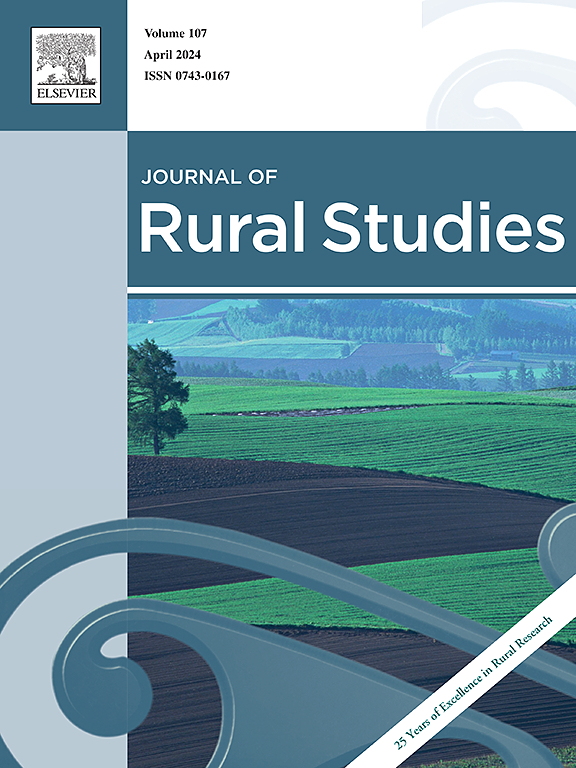The supply of labour to the green industries in Sweden: Inequality and dependence among workers and
IF 5.1
1区 社会学
Q1 GEOGRAPHY
引用次数: 0
Abstract
Sweden's green industries along with public agencies have for a long-time expressed concern over labour shortage as a consequence of the depopulation of rural areas. Agriculture and forestry have seen increased employment of migrant workers which has been accredited to this shortage, especially in parts of the production that is accentuated by manual work and seasonality. Just as in the wild berry industry, these workers often face precarious conditions in Sweden. However, the solutions to the labour shortage are described differently by different stakeholders.
This paper explores how different stakeholders on the Swedish labour market describe their need for labour within the greens industries, particularly the spatiality of the labour demands and the green commodity chain. Interviews are made with trade unions, state agencies, municipalities, and employers. In addition, policy documents and public statistics form the backdrop to the research. We identify four main themes in the narratives: Migrant labour is dominant; Agreement that it’s not easy to recruit, but the reasons why differ: The attractiveness of the industry; A growing distance between resources and industries. In conclusion, the green industries have on a structural plane chosen to solve their labour supply, which is shaped by contemporary globalization, but also that solutions can be multifaceted and dependent on the employers.
瑞典绿色产业的劳动力供应:工人和企业之间的不平等和依赖性
瑞典的绿色产业和公共机构长期以来一直对农村地区人口减少造成的劳动力短缺表示担忧。农业和林业增加了移徙工人的就业,这被认为是造成这种短缺的原因,特别是在体力劳动和季节性突出的生产部分。就像在野生浆果行业一样,这些工人在瑞典经常面临不稳定的环境。然而,不同的利益相关者对劳动力短缺的解决方案有不同的描述。本文探讨了瑞典劳动力市场上不同的利益相关者如何描述他们对绿色产业内劳动力的需求,特别是劳动力需求和绿色商品链的空间性。采访对象包括工会、州政府机构、市政当局和雇主。此外,政策文件和公共统计数据构成了研究的背景。我们确定了叙事中的四个主题:外来劳动力占主导地位;大家都认为招聘不容易,但原因各不相同:行业的吸引力;资源与产业的距离越来越远。综上所述,绿色产业在结构层面上选择了解决其劳动力供应问题,这是由当代全球化形成的,但解决方案也可以是多方面的,并取决于雇主。
本文章由计算机程序翻译,如有差异,请以英文原文为准。
求助全文
约1分钟内获得全文
求助全文
来源期刊

Journal of Rural Studies
Multiple-
CiteScore
9.80
自引率
9.80%
发文量
286
期刊介绍:
The Journal of Rural Studies publishes research articles relating to such rural issues as society, demography, housing, employment, transport, services, land-use, recreation, agriculture and conservation. The focus is on those areas encompassing extensive land-use, with small-scale and diffuse settlement patterns and communities linked into the surrounding landscape and milieux. Particular emphasis will be given to aspects of planning policy and management. The journal is international and interdisciplinary in scope and content.
 求助内容:
求助内容: 应助结果提醒方式:
应助结果提醒方式:


